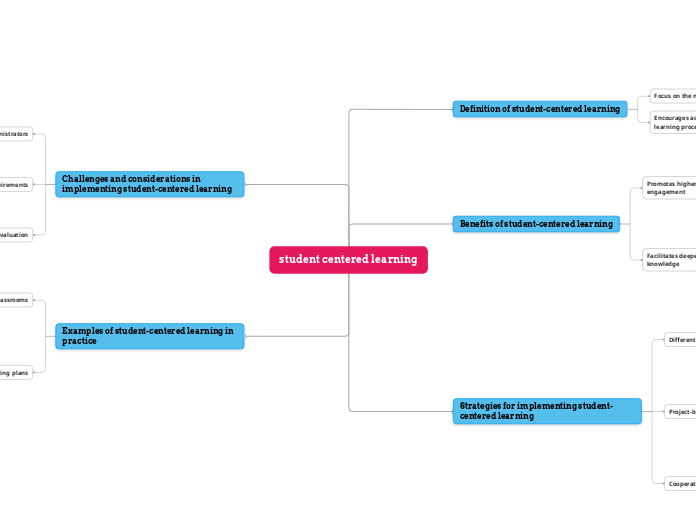作者:WILLIAM LEYDEN 1 年以前
151
student centered learning

student centered learning
Examples of student-centered learning in practice
Individualized learning plans
Providing personalized feedback and support
Customizing learning goals and strategies for each student
Flipped classrooms
Class time is used for discussion
and application
collaboration
Students learn content at home through videos or readings
Challenges and considerations in implementing student-centered learning
Assessment and evaluation
Incorporating formative assessment strategies
Shifting focus from traditional tests to authentic assessments
Time constraints and curriculum requirements
Integrating student-centered activities into existing curriculum
Balancing student-centered approaches with content coverage
Resistance to change from teachers and administrators
Overcoming traditional teaching practices and mindset
Need for professional development and support
Strategies for implementing student-centered learning
Cooperative learning
Developing social and interpersonal skills
Encouraging peer-to-peer learning and support
Promoting collaboration and teamwork among students
Project-based learning
Fostering creativity and innovation
Encouraging inquiry and exploration
Engaging students in real-world
hands-on projects
Differentiated instruction
Allowing for flexibility in pacing and assessment
Providing various learning activities and materials
Tailoring instruction to meet the diverse needs of students
Benefits of student-centered learning
Facilitates deeper understanding and retention of knowledge
Supports personalized learning experiences
Promotes collaboration and communication skills
Provides opportunities for critical thinking and problem-solving
Promotes higher levels of student motivation and engagement
Enhances student autonomy and independence
Increases student accountability
Allows students to take ownership of their learning
Definition of student-centered learning
Encourages active participation and engagement in the learning process
Focus on the needs and interests of individual students

